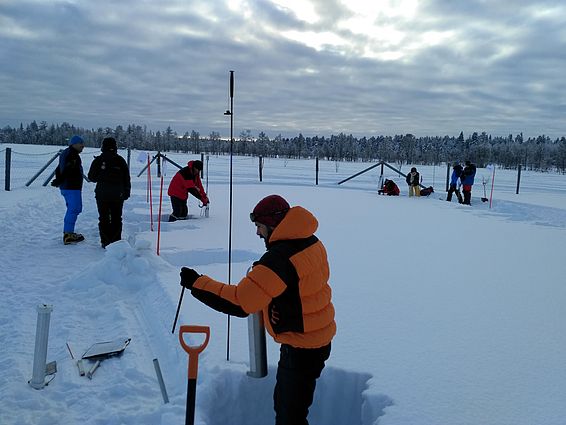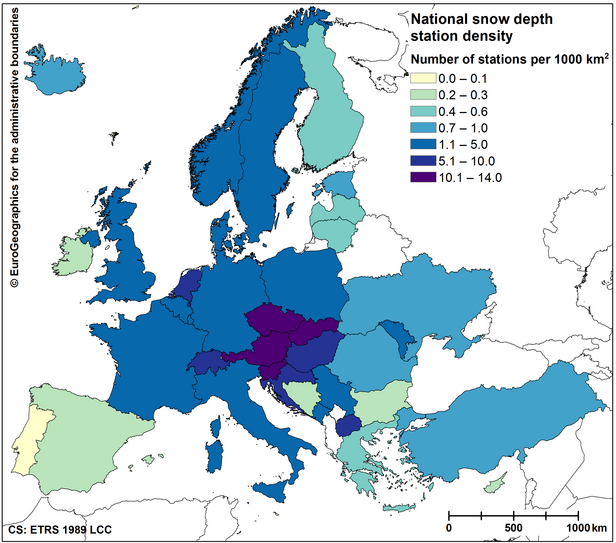24.06.2019 | News SLF
By: Claudia Hoffmann
The European Snow Booklet is a new reference work which, for the first time, provides an overview of the operational snow measurements taken in 38 European countries. Information about the methods and standards applied in different locations helps practitioners and researchers to assess and interpret the data.

Switzerland is one of many European countries that maintain measuring networks for recording snow data. The collected data on total snow depth, depth of snowfall and water equivalent of the snow cover are important not only for avalanche warning purposes, but also for numerical weather prediction, calculating snow water quantities for reservoirs, and researching the effects of climate change.
If the data captured in different locations or countries are to be comparable, the measurements have to be taken in the same way. If this is not the case, interpreting the data is difficult. Explaining the current problem in this respect, Anna Haberkorn, who is a member of the SLF’s research unit Snow and Permafrost, says, “There has not previously been a comprehensive examination of the European countries that actually measure snow and the methods that they use.”
Comprehensive inventory
For this reason, Haberkorn joined forces with other researchers at the SLF to conduct a pan-European survey on the subject. Numerous institutions in 38 European nations responded by reporting whether, and how, they record snow data. Their input has now been collated in the European Snow Booklet, which can be downloaded free of charge as an English-language PDF file. This unprecedented reference work is the first to offer an overview of operational snow measuring practices in Europe. It represents a very useful tool for scientists, avalanche warning agencies, meteorologists and other practitioners.
The information contained in the book’s 363 pages includes the number, distribution and altitude zones of automatic and manual measuring stations. It reveals which snow variables are measured and describes the standards and techniques that are applied, which is crucial if the data are to be interpreted correctly. Among other contents is a list of contacts who can provide further information about the individual countries’ measured data. Another section contains a preliminary edition of the measurement standards for snow, which are currently being formulated by the Global Cryosphere Watch (GCW) initiative of the World Meteorological Organisation (WMO).
The European Snow Booklet delivers a indispensable snapshot of current practice, and can serve as a starting point for further steps towards enhancing the comparability of snow measurements. It was produced within the framework of the COST Action HarmoSnow (European network for a harmonised monitoring of snow for the benefit of climate change scenarios, hydrology and numerical weather prediction). This Action serves the purpose of coordinating snow measuring methods and standards, and improving communication between operational services and researchers.

Contact ¶
Links ¶
Copyright ¶
WSL and SLF provide image and sound material free of charge for use in the context of press contributions in connection with this media release. The transfer of this material to image, sound and/or video databases and the sale of the material by third parties are not permitted.
